Qubi vs. qubits
What is Qubi?
Qubi is a physical device that mimics a qubit. It can teach you how qubits can help us do amazing things.
What kind of qubits does Qubi mimic?
All qubits follow exactly the same set of rules, so Qubi mimics every kind! We'll compare Qubi with three different kinds: The trapped ion qubit, the photon polarization qubit, and the neutral atom qubit.
How does it work?
Each feature of Qubi mimics a feature of real-world qubits. Let's go through them, and see how the real qubit does the same thing.
Bring Qubi into your inbox
Subscribe to get notified to get priority access when we launch, stay updated on quantum breakthroughs, plus exclusive offers and deals.
The dot direction
The dot can face any direction around qubi.
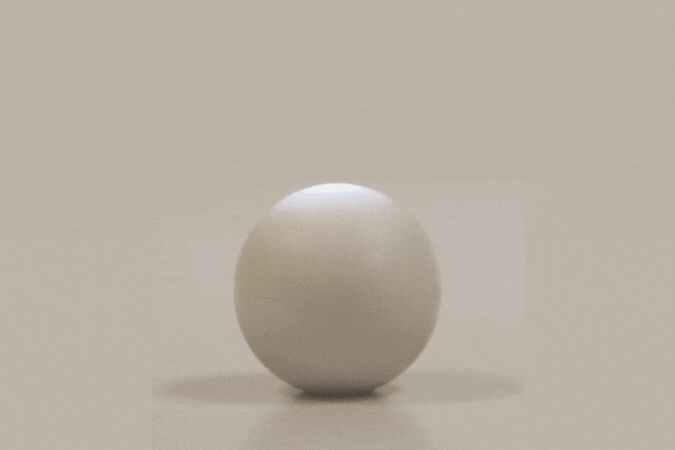
The spin direction
Ions like Ytterbium+, Barium+, or Cesium+ are levitated using electric fields. Each has a valence electron, acts like a tiny little magnet. It has a North Pole, which we call “spin”. The spin can face any direction around the electron.
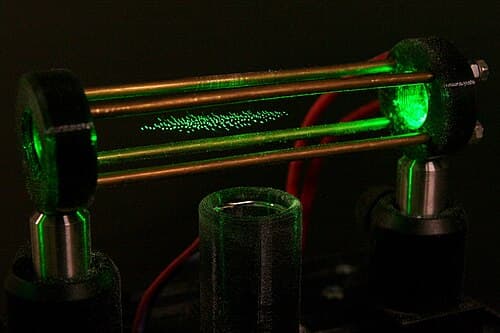
An ion trap demonstrating levitation of small dust particles.
A shake reveals the dot direction
Be sure to shake in a straight line, don't twist or rotate too much..
A laser reveals the spin direction
The direction of the spin is measured via a special laser. When they shoot the laser at the electron, the electron will only absorb the laser if its spin is pointed upwards. If the electron absorbed a photon from the laser, it has to spit it back out at some point - so it will start glowing on film! So, we check if the electron starts glowing, revealing where the spin is pointing.
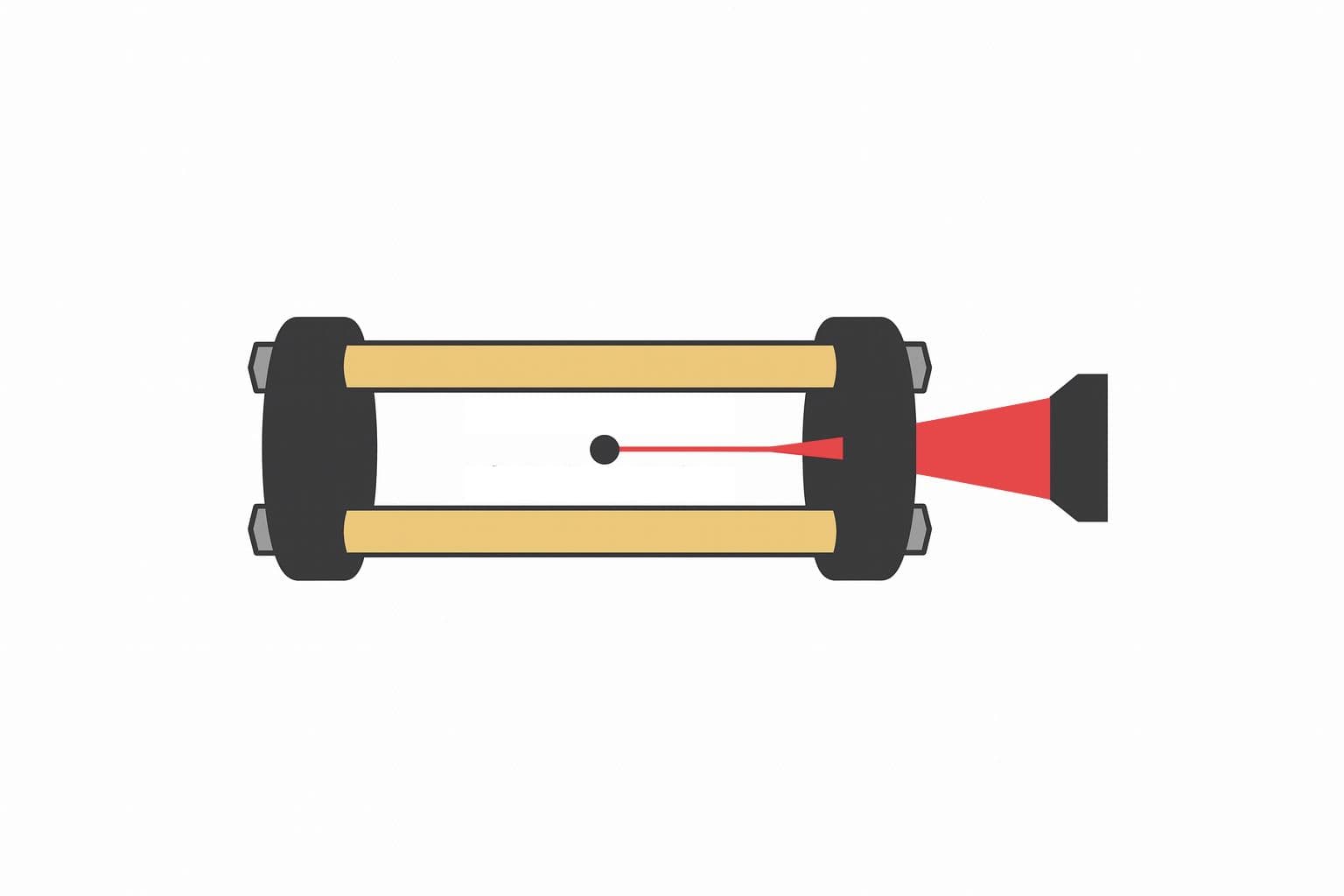
Illustration of a laser shining on an ion in an ion trap.
A flick rotates the dot direction
Flicking or twisting in different directions rotates the dot in different directions.
A laser rotates the spin direction
The electron spin can be rotated via another special laser. Based on their wavelength, these lasers can make the spin rotate in different ways around the electron.
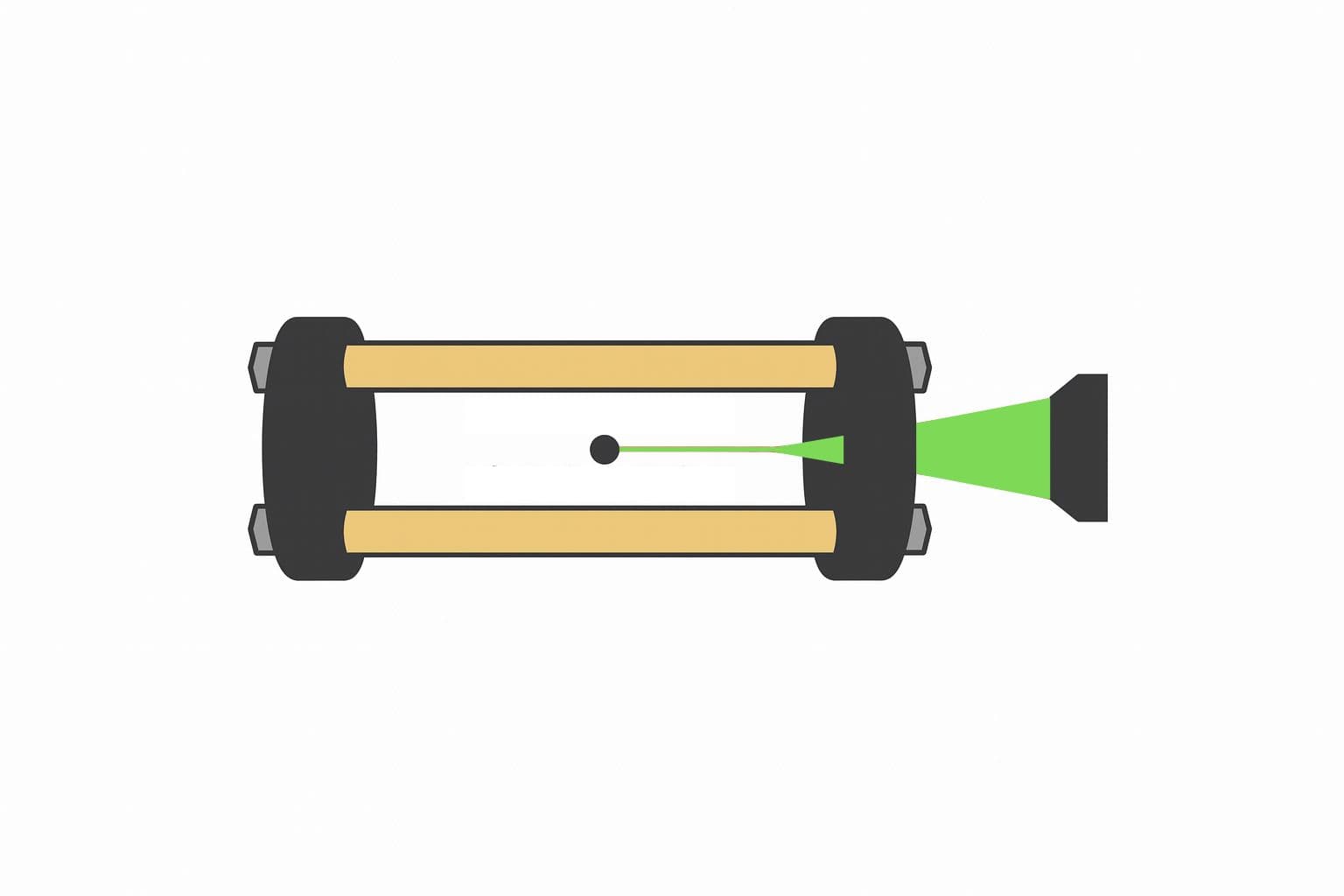
Illustration of a laser shining on an ion in an ion trap.
A bump creates entangled dot directions
We use motion sensors to detect when the Qubis are bumped. Bumping the Qubis creates entanglement between the dots of the two Qubis.
Two lasers entangle the spins
Two different lasers are shot at the two electrons we want to entangle. If the first electron is facing up, it will absorb its laser which will create a micro-vibration in the whole trap. Now, if the trap is vibrating, the second laser will translate that vibration into a flip for the second qubit! This creates entanglement between the electron spins.
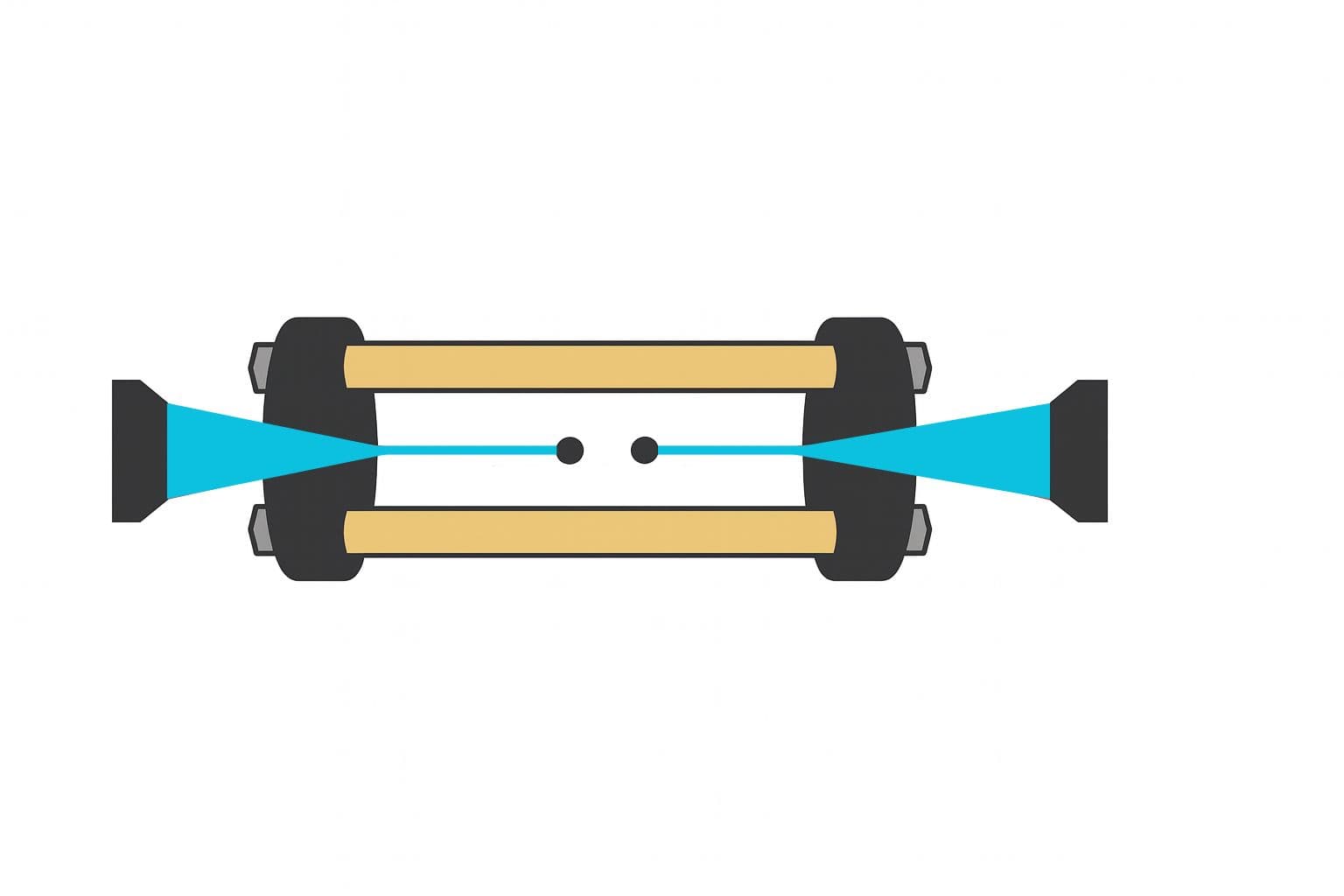
Illustration of two lasers in an ion trap.
The rainbow shows us correlated directions
The rainbow shows us exactly which directions on the Qubi are correlated when they are entangled.
N/A
No analogy exists in real trapped ion qubits - we can't see entanglement in the real world.